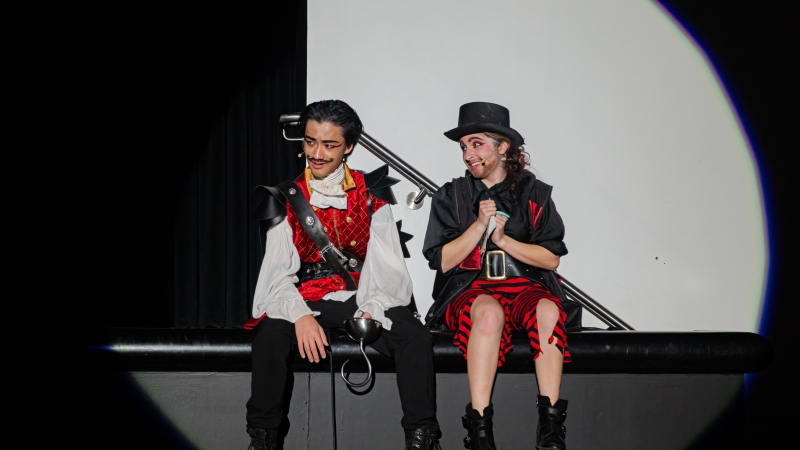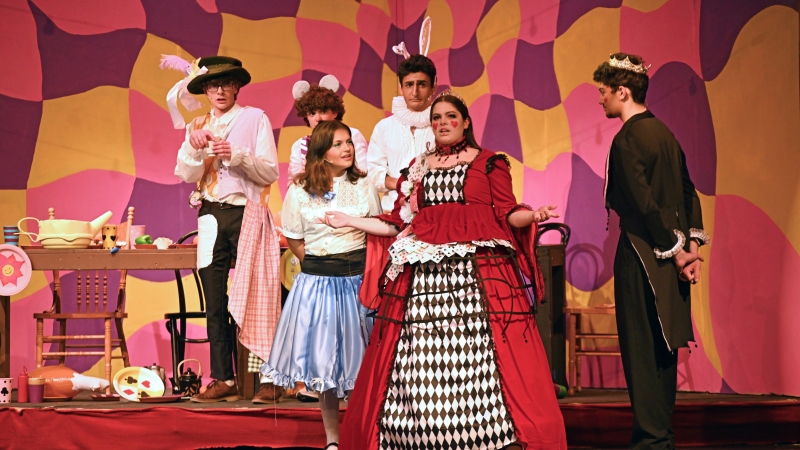
Cappies Review of Mr. Burns, A Post-Electric Play at Hayfield Secondary School
Fairfax County Public Schools students are talented actors, musicians, and visual artists. Many FCPS high schools participate in the Washington, D.C., chapter of the Critics and Awards Program for High School Theatre, otherwise known as the Cappies.
The Cappies is a program through which high school theater and journalism students are trained as critics, attend shows at other schools, write reviews, and publish those reviews in local newspapers. There are fifteen Cappies chapters across the United States and Canada.
Editor's Note: This review of Hayfield Secondary School's production of Mr. Burns, A Post-Electric Play was written by Catherine Kane of Falls Church High School.
With a seemingly infinite number of streaming services and a constant deluge of shows "you just have to watch," the TV landscape can feel like a post-apocalyptic world of subscriptions, cable cutting, and trying to get your family members' Netflix passwords. But in a real apocalypse, what shows would be worth remembering? If much of humanity was wiped out, would we reminisce about shouting matches on Judge Judy or reenact pranks from The Office?
Hayfield Secondary School's Mr. Burns, A Post-Electric Play explored this very idea with a show that had been a stalwart of the American small screen for decades, The Simpsons. After an unspecified, highly catastrophic, and possibly nuclear event, nearly all of civilization was wiped out, leaving roaming packs of survivors to fend for themselves in an apocalyptic world. Mr. Burns followed a surviving group turned theater troupe that specialized in performing live action Simpsons episodes to audiences of other survivors. The troupe was able to perform because a few of the members had the usually pretentious, usually insufferable, but helpful-in-an-apocalypse skill of being able to recite Simpsons episodes verbatim.
Wiley Prior, playing Gibson, one of the leaders of the troupe, had enthusiasm that spilled and flowed from scene to scene. He achieved the highest of highs with his character, leading him up to the emotional heights of Simpsons reenacting and the joys of being able to remember a line years after he saw the episode. Prior also brought the vulnerability of Gibson crashing and burning from fights with his stage mates and the delusions of an apocalyptic world. In the show's eponymous role of Mr. Burns, Carter Elliff embodied the sinister and comically evil madman. Nothing was too far for Mr. Burns and Elliff played up the nearly cringeworthy cruelty of the loony Springfield resident.
Hayfield performed the show in a black box theater, a fantastic choice that intensified the drama of the play and amplified the bizarreness of it. Lighting by Gregory Alspaugh was nearly always distorted, creating a hazy effect that never quite gave the audience a clear look at the character's faces. The haziness of it created a mystifying quality to the show and allowed the actors' dialogue, movement, and physical interactions to be emphasized.
The third and final act of the show was a surreal montage of Greek choruses, the Simpsons family being executed, and a fantastical parody of Ricky Martin's "Livin La Vida Loca," a vocal rendition of the 20th Century Fox intro was even thrown in (Fox produced The Simpsons until it was bought by Disney in 2017). Throughout the third act, a parade of intellectual property was marched across the stage in the form of lightsaber battles, Britney Spears' "Toxic", and an eclectic mix of rap parodies performed by Homer Simpson and Mr. Burns.
However, copyright law doesn't exist after the apocalypse and Hayfield Secondary School's Mr. Burns was having too much fun to care anyway.




